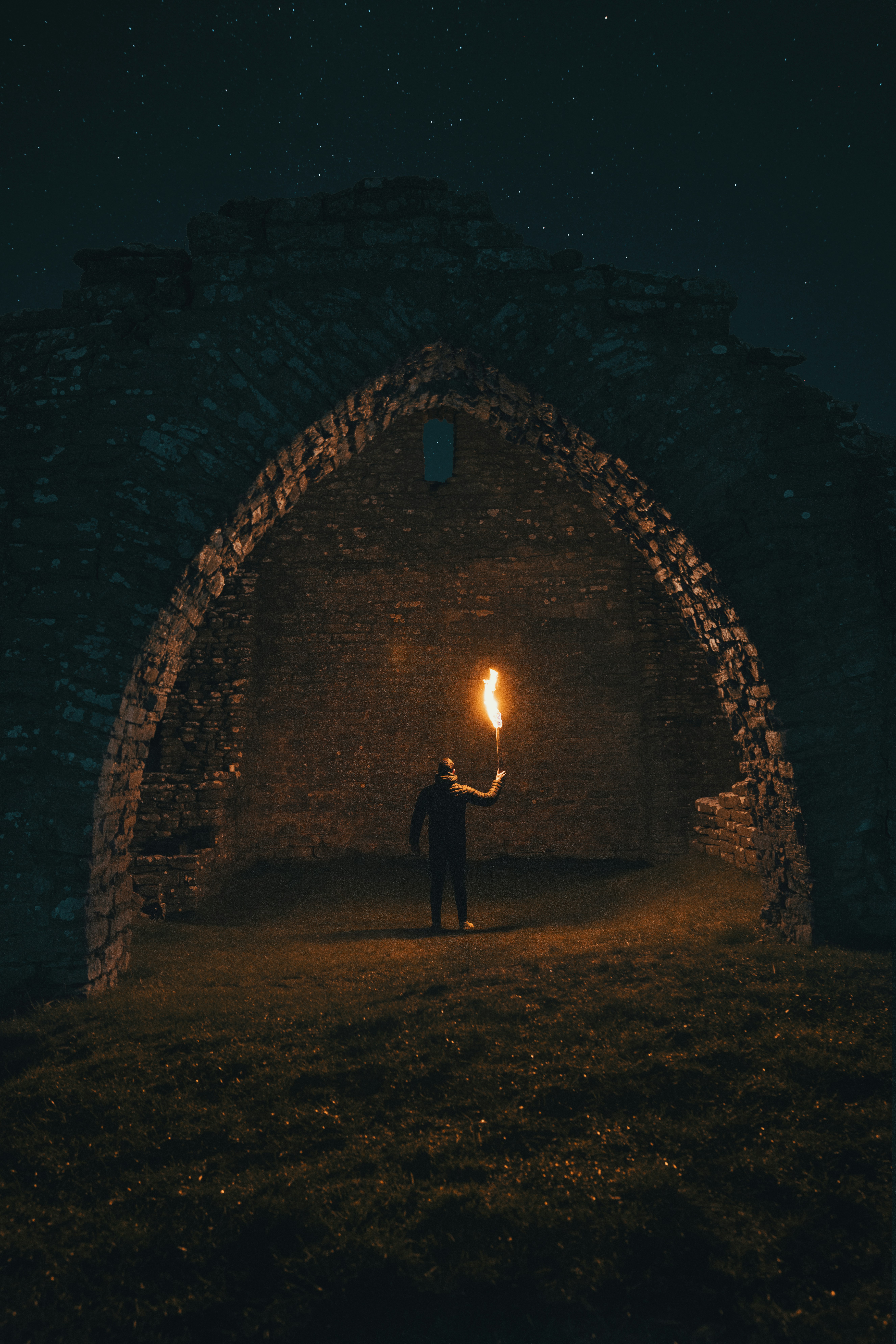Have you ever wanted to escape to a magical world, filled with talking animals, epic adventures, and the eternal battle between good and evil? Look no further! In “The Lion, the Witch and the Wardrobe,” the first book of the Chronicles of Narnia series, you will be transported to a land beyond your wildest imagination. Join the Pevensie siblings as they discover a hidden portal in a seemingly ordinary wardrobe, leading them to the enchanting realm of Narnia. As they navigate through snowy landscapes, meet mythical creatures, and encounter an evil witch, their bravery and loyalty will be put to the test in a timeless tale of hope and redemption. Get ready to embark on a thrilling journey that will captivate readers of all ages!
Summary
“The Lion, the Witch and the Wardrobe” is a fantasy novel written by C.S. Lewis and is the first book in “The Chronicles of Narnia” series. It tells the story of four siblings – Peter, Susan, Edmund, and Lucy Pevensie – who stumble upon a magical wardrobe that transports them to the enchanting land of Narnia. In Narnia, they find themselves caught in the eternal winter ruled by the evil White Witch. With the help of Aslan, the majestic lion and true ruler of Narnia, the siblings embark on a journey to overthrow the Witch and bring back peace and prosperity to the land.
Brief Overview
“The Lion, the Witch and the Wardrobe” takes readers on an incredible adventure where ordinary children discover an extraordinary world filled with talking animals, mythical creatures, and epic battles between good and evil. The novel explores themes of courage, loyalty, sacrifice, and redemption, making it a timeless and beloved classic.
Plot Summary
The story begins during the Second World War in London, where the Pevensie siblings are sent away to the countryside to escape the bombings. They are taken in by an old professor who lives in a large mansion. While exploring the house, young Lucy Pevensie discovers a wardrobe that leads to the magical world of Narnia. When she returns and tells her siblings about her adventures, they are skeptical but eventually decide to venture into the wardrobe themselves.
In Narnia, Lucy meets a friendly faun named Mr. Tumnus who reveals that Narnia is under the tyrannical rule of the White Witch, Jadis. Edmund, the youngest of the siblings, betrays his family by siding with the Witch, hoping to gain power and favor. As the story progresses, the siblings learn about the prophecy that claims they are the chosen ones who will bring an end to the Witch’s reign.
With the guidance of the wise and noble lion, Aslan, the Pevensie children set off on a treacherous journey to Aslan’s camp, encountering various dangers and obstacles along the way. Aslan sacrifices himself to save Edmund from the consequences of his betrayal, mirroring the story of Jesus Christ’s crucifixion. However, Aslan is resurrected, symbolizing redemption and hope.
The battle against the White Witch ensues, with the Pevensie children rallying the support of Narnia’s inhabitants and engaging in a climactic showdown. Aslan’s army triumphs over the Witch, bringing an end to her cruel reign. As spring arrives and the snow melts away, Narnia is restored to its former glory, and the Pevensie children become the rightful kings and queens of the land.
Introduction to ‘The Lion, the Witch and the Wardrobe’
Author’s Background
C.S. Lewis, born in Belfast, Ireland, in 1898, was a renowned British author and scholar. He is best known for his works of fantasy, particularly “The Chronicles of Narnia” series. Lewis’s experiences as a soldier in World War I and his deep Christian faith greatly influenced his writing.
Publication and Reception
“The Lion, the Witch and the Wardrobe” was first published in 1950. It received high praise from both critics and readers, establishing Lewis as a master storyteller. The book quickly gained popularity and has since become one of the most beloved and influential works in children’s literature.
Genre and Themes
“The Lion, the Witch and the Wardrobe” falls under the genre of fantasy literature. It combines elements of adventure, magic, and mythology to create a captivating and immersive world. The novel explores themes of bravery, sacrifice, forgiveness, and the struggle between good and evil, appealing to readers of all ages.

This image is property of images.unsplash.com.
Main Characters
Pevensie Siblings
Peter, Susan, Edmund, and Lucy Pevensie are the main protagonists of the story. They are ordinary children who become extraordinary heroes in the magical land of Narnia. Each sibling possesses unique qualities that contribute to their roles in the quest to defeat the White Witch and restore peace.
Aslan
Aslan, the powerful and noble lion, serves as a central figure in the book. He represents goodness, justice, and wisdom, often portrayed as a Christ-like figure. Aslan guides and protects the siblings on their journey, offering them comfort, and guidance, and ultimately sacrificing himself to save Edmund.
The White Witch
Jadis, also known as the White Witch, is the primary antagonist of the story. She is a cold and cruel sorceress who has plunged Narnia into an eternal winter. The Witch embodies evil, greed, and tyranny, seeking to maintain control over Narnia at any cost.
Mr. Tumnus
Mr. Tumnus, a kind-hearted faun, is Lucy’s first friend and ally in Narnia. He is initially under the Witch’s influence but forms a bond with Lucy and helps her on her journey. Mr. Tumnus represents loyalty, redemption, and the capacity for good within even those who have strayed.
Plot
Entering Narnia
The story begins when the Pevensie children are sent to an old professor’s house in the countryside to escape the bombings of London during World War II. While exploring the mansion, the curious Lucy stumbles upon a wardrobe that serves as a portal to the magical world of Narnia. She befriends the kind Mr. Tumnus and experiences the wonder of Narnia before returning to the real world.
Journey to Aslan’s Camp
When Lucy tells her siblings about Narnia, they are skeptical at first but eventually decide to venture into the wardrobe themselves. The four children find themselves in the snowy landscape of Narnia and encounter the mystical and majestic lion, Aslan. With Aslan’s guidance, they embark on a dangerous journey towards his camp, meeting various creatures and encountering the White Witch’s cruel reign along the way.
The Battle against the Witch
As the Pevensie children gain allies and support from the inhabitants of Narnia, they form an army to challenge the White Witch’s rule. The battle between good and evil ensues, culminating in a climactic showdown between the Pevensies and their allies against the Witch and her forces. With Aslan’s sacrifice and resurrection, the tide turns in their favor, leading to the defeat of the Witch and the restoration of peace in Narnia.
The Final Battle and the End of Winter
With the Witch defeated, Narnia is freed from her icy grip. Aslan breathes life into the stone statues scattered throughout the land, transforming them back into living creatures. Spring arrives, and the snow begins to melt, symbolizing the end of winter and the rebirth of Narnia. The Pevensie children are crowned as the kings and queens of Narnia, ruling with wisdom and justice, as prophesied.

This image is property of images.unsplash.com.
Symbolism and Allegory
Christian Allegory
“The Lion, the Witch and the Wardrobe” is often interpreted as a Christian allegory, with many parallels to biblical stories and themes. C.S. Lewis, a devout Christian, infuses his storytelling with Christian symbolism, making the novel resonate with readers who appreciate religious undertones.
Aslan as a Christ Figure
Aslan represents Jesus Christ in the story, serving as a symbol of self-sacrifice and redemption. His sacrifice for Edmund mirrors the crucifixion of Jesus, while his subsequent resurrection signifies hope and victory over evil. Aslan’s wisdom, power, and noble nature parallel the characteristics associated with Christ.
Turkish Delight as Temptation
Turkish Delight, the enchanted sweet treat that the White Witch uses to tempt Edmund into betraying his siblings, can be interpreted as a symbol of temptation. It represents the allure of sin and the consequences of giving in to our selfish desires. Edmund’s weakness for Turkish Delight highlights the universal struggle between good and evil and the importance of resisting temptation.
Adaptations and Popularity
Film Adaptations
“The Lion, the Witch and the Wardrobe” has been adapted into various film and television adaptations, bringing the magical world of Narnia to life. The most notable adaptation is the 2005 film directed by Andrew Adamson, which received critical acclaim and achieved commercial success worldwide.
Stage Adaptations
The novel has also been adapted for the stage, captivating audiences with its enchanting storytelling and vibrant visuals. These adaptations allow viewers to experience the magic of Narnia in a live theatrical setting, further cementing the legacy of the book.
Impact and Cultural Significance
“The Lion, the Witch and the Wardrobe” has had a profound impact on both children’s literature and popular culture. It has inspired countless readers, sparking their imagination and igniting a love for fantastical storytelling. The book’s enduring and universal themes have made it a beloved classic that continues to resonate with both young and adult audiences.

This image is property of images.unsplash.com.
Related Works and Series
Other Books in ‘The Chronicles of Narnia’
“The Lion, the Witch and the Wardrobe” is the first book in “The Chronicles of Narnia” series, which consists of seven interconnected novels. Each book explores different characters and adventures in the magical world of Narnia, creating a rich and expansive universe. The subsequent books further expand upon the themes introduced in the first installment and delve deeper into the mythology of Narnia.
Reading Order of the Series
While “The Lion, the Witch and the Wardrobe” is the most well-known and widely read book in the series, readers can choose to read the books in either publication order or chronological order within the Narnian timeline. Each reading order offers a unique perspective and understanding of the overarching narrative.
Influence and Legacy
Influential Fantasy Literature
“The Lion, the Witch and the Wardrobe” has had a significant influence on the genre of fantasy literature. Its imaginative world-building, memorable characters and timeless themes have inspired generations of authors and paved the way for future fantasy classics. The book’s impact can be seen in works such as J.K. Rowling’s “Harry Potter” series and Philip Pullman’s “His Dark Materials” trilogy.
Children’s Literature
C.S. Lewis’s masterpiece has played a pivotal role in shaping children’s literature as we know it today. Its ability to captivate the imagination, teach valuable life lessons, and ignite a lifelong love for reading has made it a staple in classrooms and libraries around the world. “The Lion, the Witch and the Wardrobe” continues to be a cherished literary work that introduces young readers to the power of storytelling and the importance of imagination.
Religious Influence
As a deeply religious writer, C.S. Lewis infused his faith into his writings, including “The Lion, the Witch and the Wardrobe.” The book’s Christian allegory has resonated with readers of various religious backgrounds, sparking discussions and reflections on faith, sacrifice, and redemption. It stands as a testament to the power of storytelling to explore and convey spiritual and moral truths.
Controversies and Criticisms
Religious Messaging
While many readers appreciate the Christian allegory in “The Lion, the Witch and the Wardrobe,” some critics argue that the religious messaging may be too explicit or heavy-handed for certain readers. However, others argue that the novel’s themes of sacrifice, forgiveness, and redemption can resonate with readers regardless of their religious beliefs.
Ethnic Stereotypes
The portrayal of certain characters in “The Lion, the Witch and the Wardrobe” has faced criticism for perpetuating ethnic stereotypes. Particularly, some readers have raised concerns about the representation of the Tarkaan characters, which they believe rely on exoticizing and marginalizing Middle Eastern cultures. These concerns highlight the importance of thoughtful and inclusive representation in literature.
Gender Roles
Critics have also noted the traditional gender roles portrayed in the book, with the girls taking on nurturing and caregiving roles while the boys assume leadership positions. Some argue that this reinforces gender stereotypes and limits the potential for diverse and empowering representations of characters.
“The Lion, the Witch and the Wardrobe” continues to captivate readers of all ages with its enchanting storytelling, memorable characters, and timeless themes. C.S. Lewis’s masterful blend of fantasy, Christian allegory, and moral lessons make it a beloved classic that has stood the test of time. From its publication to its various adaptations, this tale of bravery, sacrifice, and redemption has left an indelible mark on the world of literature, inspiring generations and opening doors to the wondrous realm of Narnia.
Its enduring appeal, literary merit, and thought-provoking themes solidify its place among the greatest works in children’s literature. “The Lion, the Witch and the Wardrobe” stands as a testament to the power of storytelling to transport readers to new worlds, ignite their imaginations, and impart valuable life lessons.





